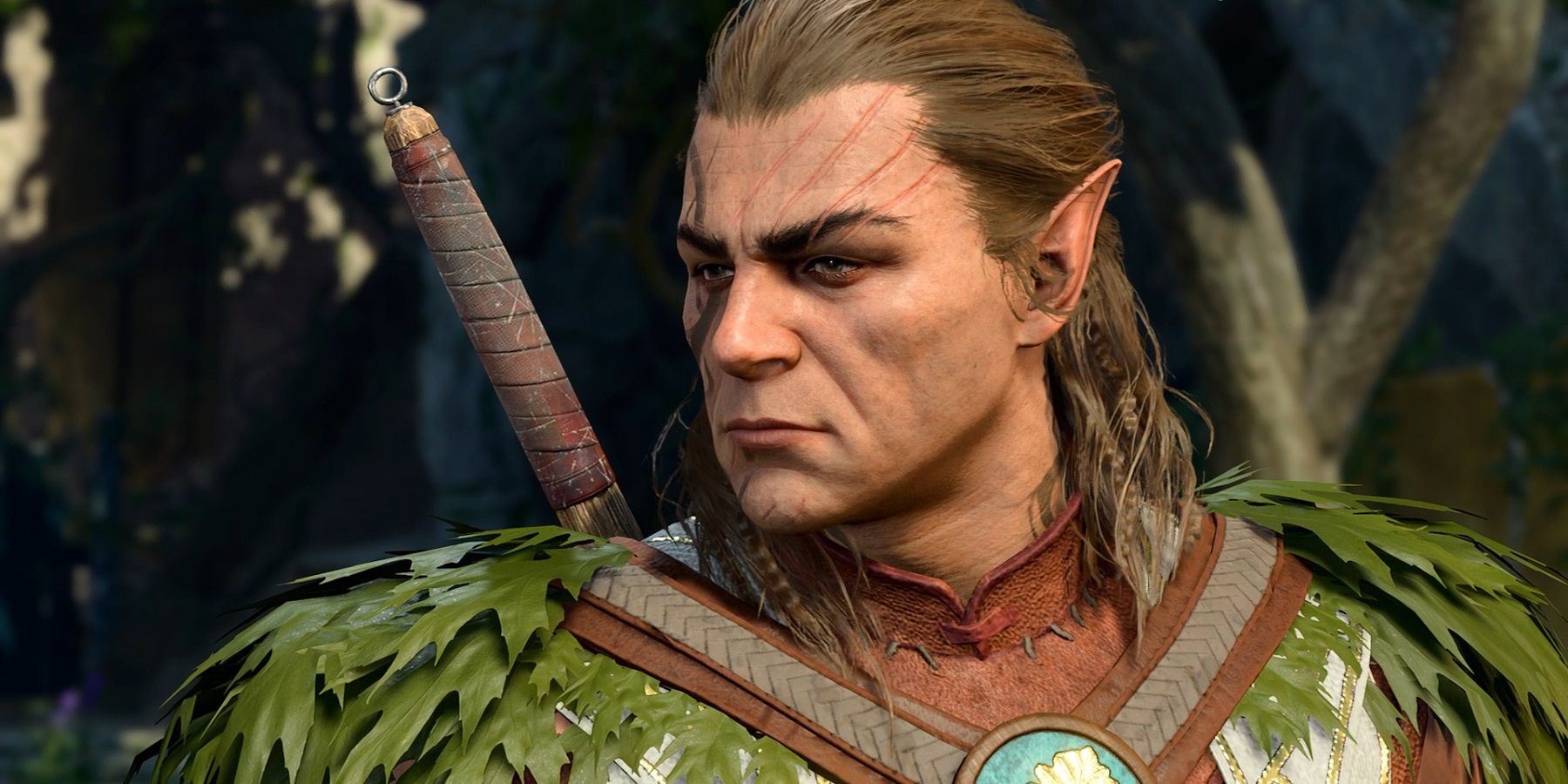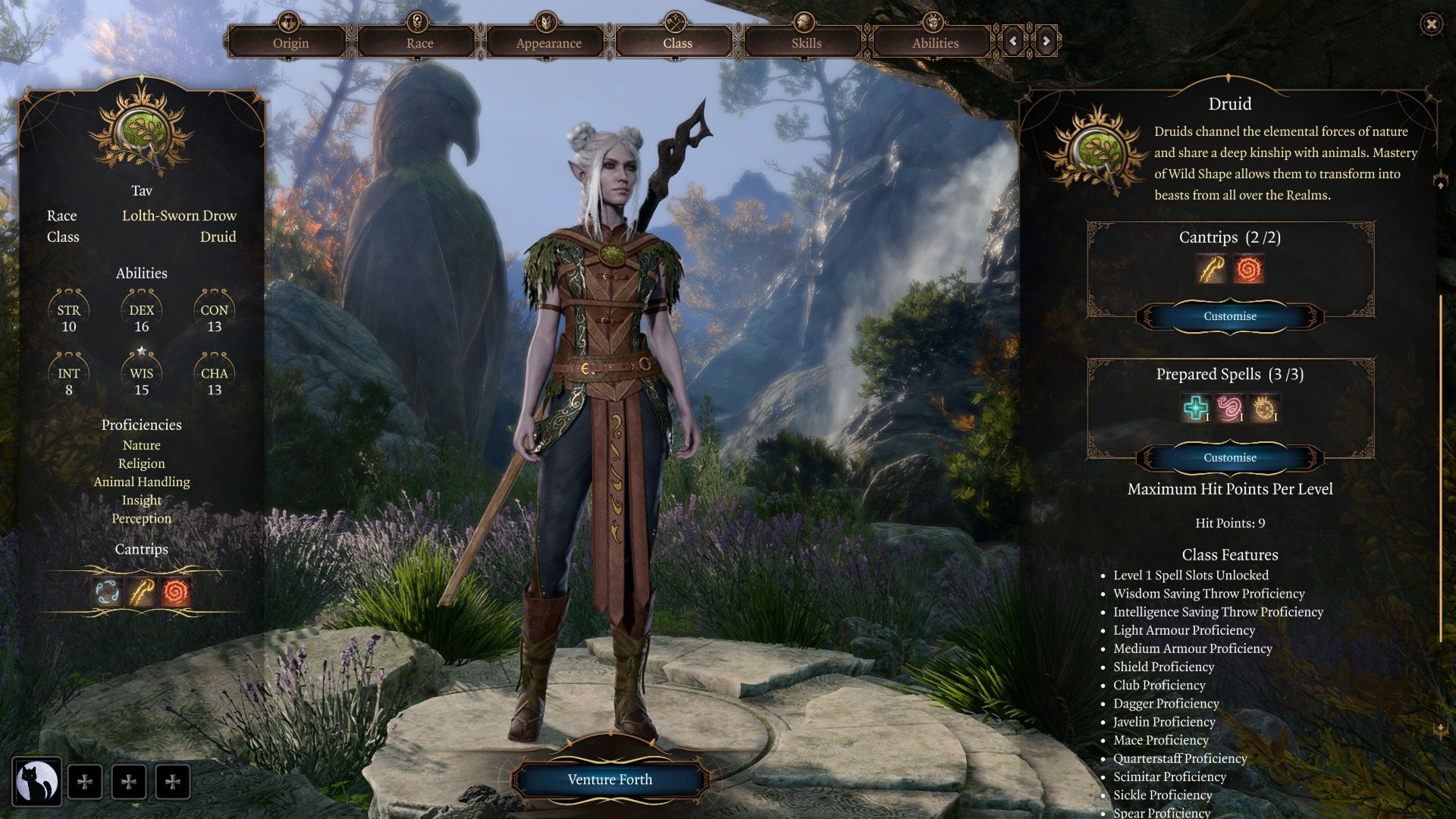Baldur's Gate 3 is a title that will be filled with tough decisions that players have to make, but arguably one of the most difficult comes right at the very start. Choosing a class and a race in Baldur's Gate 3 can be daunting given it features 11 races and 12 classes that can be further divided into 46 subclasses. With this variety, it can lead to a lot of worry that something will go wrong in figuring out a build, but Druids might be great for those with choice paralysis because they're good at a little bit of everything.
Unlike many classes in Baldur's Gate 3, Druids are incredibly versatile since they can specialize in all sorts of departments without needing to multiclass. While both Druids and Rangers tie themselves to nature, the former is focused more on spellcasting, ranging from support and healing to offensive powers that make melee-centered builds viable.
Druids in Baldur's Gate 3 Function Great as Attackers and Defenders
While a Druid in Baldur's Gate 3 might never become as tough as a Barbarian or have some spells granted to Wizards and Warlocks, they make up for it by having the potential to still excel in one of those areas while still having perks from the other and some unique abilities of its own. Not only do they have proficiencies in Simple Weapons and Shields, but they can also wear Light Armor and Medium Armor without losing the ability to cast spells. Other magic classes can wear heavier armor sets, but that requires taking on a new feat that could be practically used on something else.
Not only that, but Druids are unique among DnD classes in that they can transform into different animals with unique abilities, ranging from a wolf that inspires allies to an owlbear to rip apart enemies. Even if transformations are useful in a situational sense, it is nice to gain certain abilities otherwise granted to a familiar but not without the drawback of familiars being fairly weak.
A Druid's subclass will ultimately define how one will play, with 3 offered in Baldur's Gate 3. Because of how varied the capabilities granted from a subclass are, it can almost feel like picking an entirely new class.
- Circle of the Land is a subclass meant for players wishing to play as a classic Druid, whose abilities are tied deeply into nature with other spells granted depending on the landform chosen.
- Circle of the Moon grants players more combative animals to shape into, such as a polar bear, and can become the party's main tank thanks to a modifier that increases health increases per level.
- Circle of the Spores caters to players who wish to have their Druid dabble in necromancy while gaining more offensive spells to be great damage dealers.
Something to consider when creating a melee-focused Druid is that regardless of the chosen subclass, their saving throws will always be intelligence or wisdom-based, meaning increasing viability for this type of build could hold one of these stats back if a player is not careful with stat distribution. This might be less of an issue depending on the chosen Baldur's Gate 3 race but is still important to note.
Regardless of the subclass chosen, a player's Druid will be a powerful party member, offering up a healthy mix of offensive and defensive capabilities that can make up for a missing Cleric, Fighter, or Wizard. Their unique ability to shapeshift into different animals with varying uses only adds to this as they range from buffing allies to distracting enemies. This level of experimentation keeps in line with the spirit of Baldur's Gate 3 to let players experiment with potential builds that might seem unusual at a glance while still being incredibly useful in the long run.
Baldur's Gate 3 comes out August 3 for PC and September 6 for PS5.


